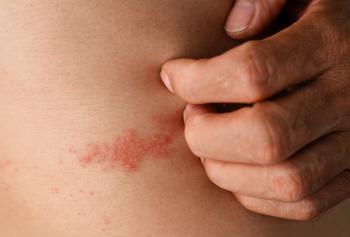
More Moderna doses per vial, research into mixing and matching, Europeans buying from China and other COVID-19 vaccine news this week
35,834,855 but who is counting?
As of last night (Feb. 12) at 8:59 p.m., the
The
NYT: FDA gives nod to more Moderna vaccine per vial
The FDA has told Moderna it can add vaccine doses to each of its vials, the New York Times and other news outlets reported yesterday (Feb. 12). The newspaper said the company wants to increase the number of doses per vial from 10 to 14. Because Moderna is currently supplying about half of the vaccine in the U.S., the per-vial increase would translate into a 20% increase in the nation’s vaccine supply, the Times reported.
Neither the FDA nor Moderna had anything posted on their webistes this morning about the per-vial dose increase, although numerous media outlets have reported tha the company has talking to the FDA about the increase.
Is it OK to mix and match the two-dose vaccines?
So far, the answer is a pretty emphatic no.
But Jon Cohen at
One mixed vaccine trial has started, according to the Cohen: the Sputnik V vaccine, made by Russia’s Gamaleya Research Institute of Epidemiology and Microbiology followed by a booster dose of the Oxford-AstraZeneca vaccine. A second trial of mix-and-match of Oxford-AstraZeneca vaccine with the Pfier-BioNTech jab is just getting going, Cohen reported, and and others are being talked abou.
EMA has started rolling review of CureVac RNA vaccine
The European Medicines Agency, which is Europe’s equivalent of the FDA, announced on Friday (Feb. 12) that has it has started a review of the RNA vaccine that has been developed by CureVac, a German biotech company.
The vaccine is still in clinical trials but a rolling review means the EMA will be looking at data as it comes in and presumably a quicker OK if the data shows safety and efficacy.
The CureVac jab is good company: The Moderna and the Pfizer-BioNTech vaccines are also RNA vaccines .
WSJ: Europe countries turning to China for vaccine
Some small European countries are losing patience with U.S. and Europen vaccine developers, so they are turning to China for COVID-19 vaccines, the
Hungary became the first EU member to separately authorize and buy vaccine from Sinopharm, a Chinese, state-owned company, WSJ reported.
Walmart, CVS and Walgreens getting into the vaccination game but still nationwide
For example, this morning the Walgreens website indicated that a shot was available in the next three days within a 25-mile radius of an address in northwest St. Paul, Minnesota. But when an address in northwest Philadelphia (mine) was entered, no such luck.
CVS said on its website this morning that the vaccine was available at “select locations” in 18 states and Puerto Rico but not in 32 other states and in Washington, D.C.
Biden: 300 million doses in U.S. hand by end of July
President Joe Biden announced Thursday (Feb. 11) that the federal government had signed a contract with Modern and Pfizer more 100 million more doses of their vaccines. Those contracts, plus sooner delivery of other doses, mean that “we are not on track to have enough supply for 300 milloin Americans by the end of July,” Biden said in
Fauci envisions COVID-19 vaccines for kids
Children as young as first graders may be able to vaccinated against COVID-19 when the new school year starts in September, Anthony Fauci, M.D., director of the National Institute of Allergy and Infectious Diseases, said
“We’re in the process of starting clinical trials in what we call age de-escalation, where you do a clinical trial with people 16 to 12, then 12 to 9, then 9 to 6,” ProPublica quoted Fauci as saying in the piece that was posted on its website on Thursday (Feb. 11).
White House says FQHCs to get supplied directly with vaccine starting next week
The White House announced on Tuesday (Feb.9) that
Newsletter
Get the latest industry news, event updates, and more from Managed healthcare Executive.


















































